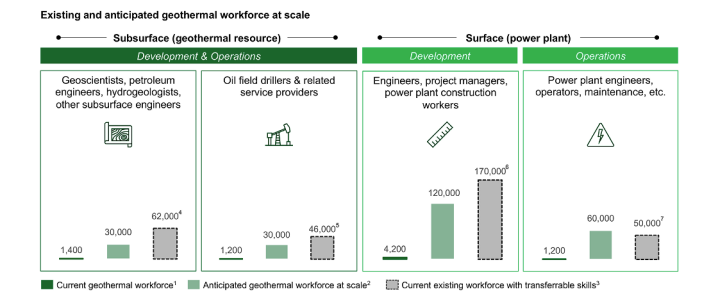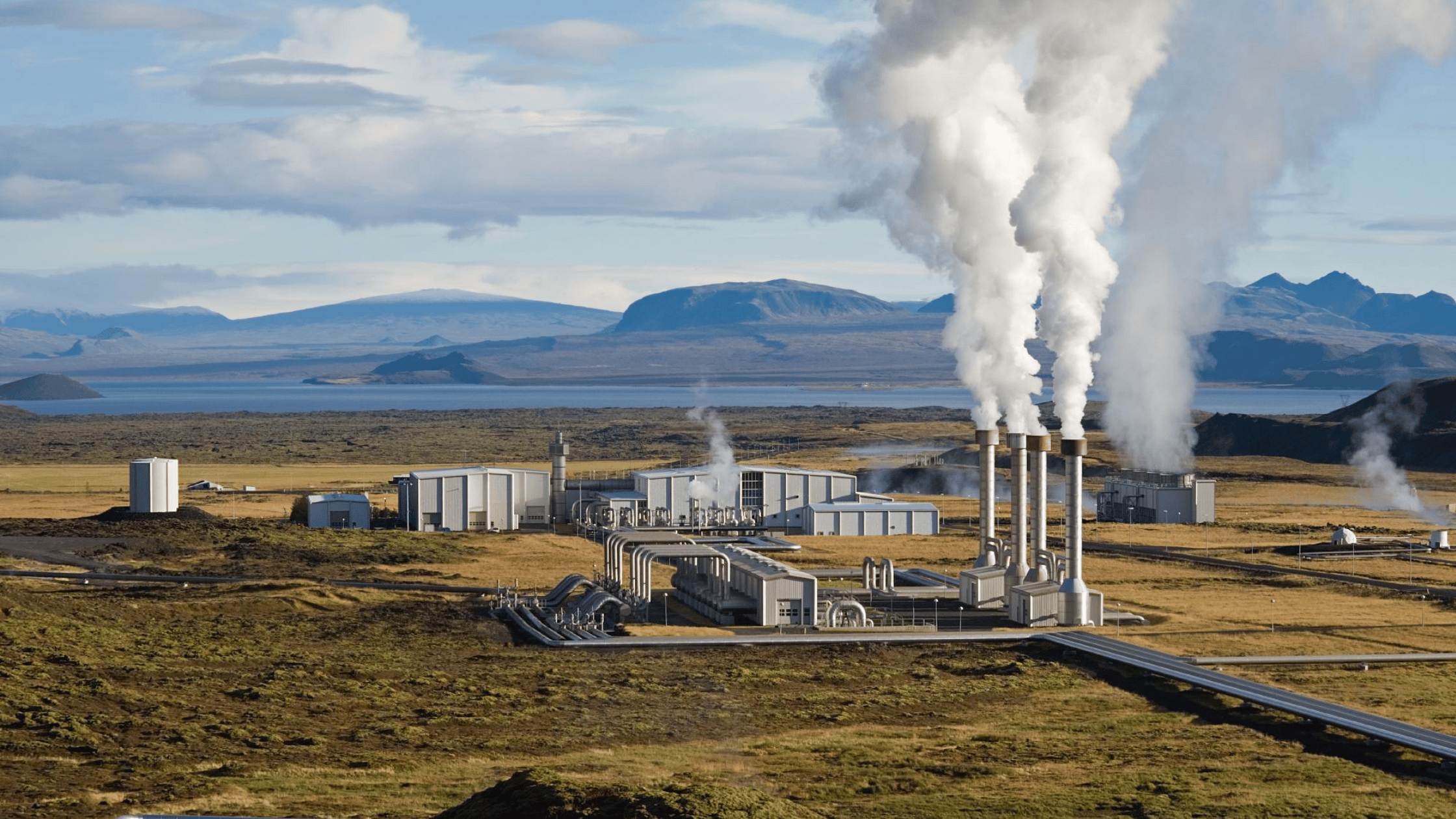The oil and gas industry’s exploration and drilling expertise are directly transferable to geothermal, offering a pathway for resource extraction companies to evolve into emission free energy generators. The sector’s experience in subsurface understanding of the technological innovations driving closed-loop and enhanced geothermal systems is crucial for tapping into the Earth’s heat efficiently and sustainably.
There are over 300,000 oil and gas and power sector workers whose skills are largely transferrable to the geothermal industry. And unlike the oil and gas industry, which has cyclical boom and bust periods, the jobs created in the geothermal industry are largely permanet, as the recent Department of Energy’s “Pathways to Commercial Liftoff: Next Generation Geothermal Energy” indicates.
The opportunity for job creation is also three-to-four times higher for a geothermal plant per megawatt than renewable energy assets like solar and wind. And these opportunities for fossil fuel workers would also contribute to the nation’s goals for a “just transition”.
Skillsets and Technologies
The similarity in challenges between geothermal and oil and gas, especially in subsurface exploration and drilling technologies, underscores the symbiotic relationship between these sectors. Innovations such as machine learning are being leveraged to optimize geothermal exploration and drilling, reducing costs and improving operational efficiencies across all stages of geothermal resource development.
 Economic and Environmental Benefits
Economic and Environmental Benefits
Geothermal energy’s role in the clean energy revolution rests on its potential to provide continuous, reliable power with significantly lower CO2 emissions compared to conventional energy sources. Investments in geothermal projects not only contribute to jobs creation but also stimulate economic activity in both urban and rural settings, demonstrating the sector’s broad economic and environmental impact. And, according to estimates from the Department of Energy, these technologies could be cost competitive with baseload fossil fuel generating assets within the next decade.
Scaling Up Geothermal
The anticipated doubling of geothermal power generation capacity by 2030 highlights the urgent need for the O&G industry’s expertise in drilling, technology development, and resource management. And the opportunity could be immense. Although enhanced geothermal systems are only now moving from pilot projects to commercialization, the Department of Energy estimates some $25 billion will be needed for the technologies under development to reach maturity.
To ensure this will happen, some of the largest oil and gas companies in the world are already making commitments.
Innovative Partnerships and Projects
Significant investments from major O&G companies into geothermal startups signal a strong industry belief in the potential of geothermal energy. Chevron and BP, along with venture firms like Breakthrough Energy Ventures, are financing advancements in low-temperature geothermal and heat power projects. Chevron’s investment in Baseload Capital, a Swedish geothermal developer, and Eavor Technologies, a Canadian geothermal solutions firm, exemplifies the strategic shift towards renewable energy sources and the diversification of energy portfolios. This investment strategy is aimed at accelerating the deployment of clean, renewable energy solutions on a global scale.
Fervo Energy, a notable player in the geothermal field, has successfully raised significant funding, with Devon Energy leading a $244 million round. This partnership highlights the potential for cross-industry collaboration to advance geothermal technology, specifically through the use of horizontal drilling techniques initially developed for the O&G industry. Fervo’s project to deliver clean energy to Google’s data centers in Nevada is an example of geothermal energy’s scalability and its role in supporting large-scale renewable energy commitments.
Strategic Integration and Workforce Mobilization
The strategic integration of geothermal projects within existing O&G infrastructures presents an opportunity to use the vast number of idle wells across the United States for geothermal energy production. This approach not only repurposes existing assets but also leverages the skilled workforce of the O&G sector, facilitating a smoother transition to renewable energy operations. The potential for collaboration extends beyond shared technologies to include workforce development, with the geothermal sector poised to absorb a significant portion of the O&G industry’s workforce in a move towards a more sustainable and renewable energy future.
A Future Powered by Collaboration
The partnerships between the oil and gas companies and geothermal startups, along with internal initiatives within traditional energy companies, represent a pivotal shift towards a sustainable energy landscape. These collaborations are not just financial investments but are strategic moves to harness the collective expertise, technology, and workforce of two historically distinct sectors. By combining the strengths of the O&G industry with the untapped potential of geothermal energy, these partnerships are paving the way for a cleaner, more sustainable energy future.

